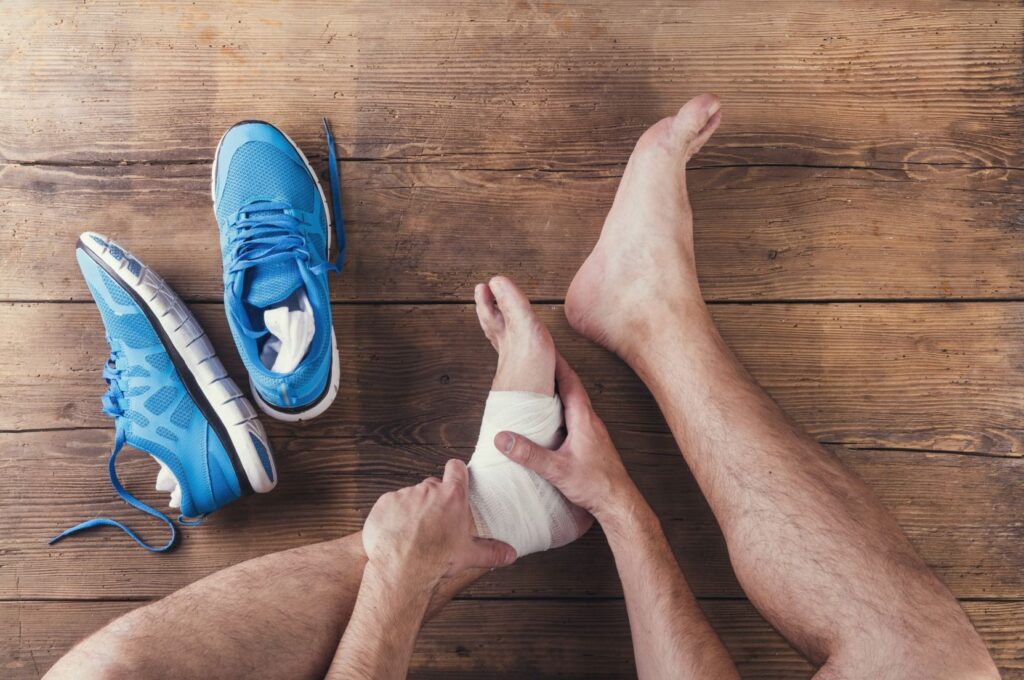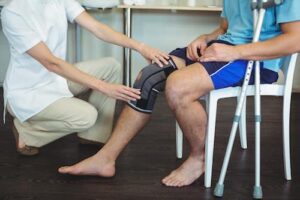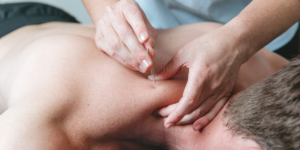At Move Steady Physio, we understand the importance of a meticulous approach to healing and strength rebuilding. Our rehabilitation program is designed to guide you through every step of the journey, ensuring a safe and effective return to your peak physical condition. The rehabilitation process can be broken down into distinct phases with specific criteria to enter each stage. This approach moves away from simply using time as a measure of progression but rather utilises key performance indicators that proves readiness for a task. This process is broken down into four distinct phases: Protection, Strength and Control, Running & Jumping, and Return to Sport.
Phase 1: Protection
The initial phase following a lateral ankle sprain is critical. The primary goals are to
protect the injured area and prepare for the rehabilitation journey ahead. This phase
involves managing pain and inflammation through rest, icing for pain relief,
compression, and elevation. Mobility exercises are gradually introduced to maintain
joint range of motion without exacerbating the injury. This phase sets the foundation
for a successful rehabilitation process, focusing on gentle preparation and protection
of the ankle.
Phase 2: Strength and Control
Once pain and swelling are under control, we shift our focus to rebuilding strength
and control. This phase involves targeted exercises to strengthen the muscles
around the ankle, particularly those that support lateral movements. Balance and
proprioception exercises are also introduced to enhance the ankle’s stability and
prevent future injuries. By the end of this phase, you should notice improved strength
and a greater sense of stability in your ankle.
Phase 3: Running and Jumping
As your ankle regains strength and stability, we begin to incorporate more dynamic
exercises. This phase focuses on regaining your ability to perform high-impact
activities without pain or hesitation. This includes running drills, jumping, and
plyometric exercises, all tailored to your progress and comfort level. The aim is to
restore confidence in your ankle’s ability to withstand the demands of your sport or
activity.
Phase 4: Return to Sport
The final phase of rehabilitation is Return to Sport. Athletic performance isn’t just
about strength; it’s also about speed, agility, and the ability to change direction
quickly. In this phase, we introduce exercises that challenge your ankle in these
areas. Agility drills, sprints, and change-of-direction exercises are all part of this
phase. The goal is to prepare your ankle for the unpredictable movements involved
in sports and daily activities.
During this phase we focus on the specific demands of your sport or activity. We
work closely with you to ensure a seamless transition back to full participation,
minimizing the risk of re-injury. This phase includes sport-specific drills, conditioning,
and, if necessary, gradual reintegration into team practices and competitions.
Conclusion
Recovering from a lateral ankle sprain requires patience, dedication, and a
comprehensive rehabilitation program. At Move Steady Physio, we’re committed to
guiding you through each phase of the process, ensuring a safe and effective return
to your sport or activity. Our holistic approach addresses not just the physical
aspects of recovery but also the psychological hurdles that may arise. Trust in our
expertise, and together, we’ll get you moving steadily once again.





